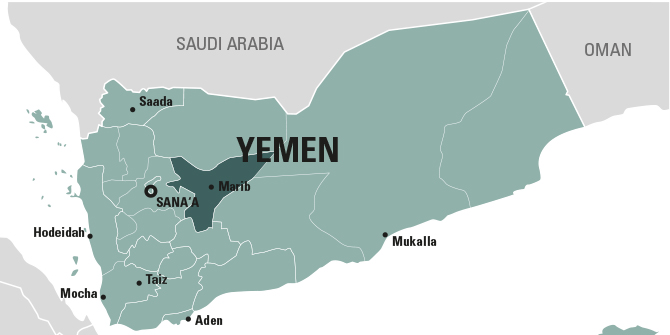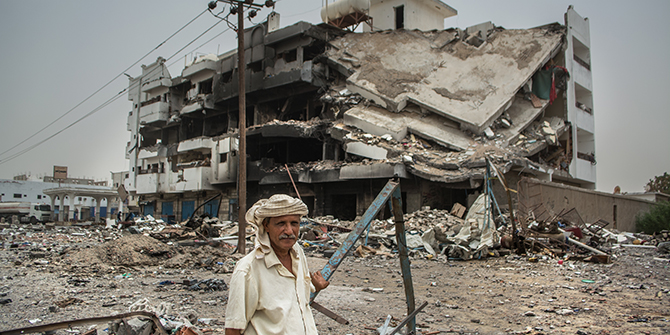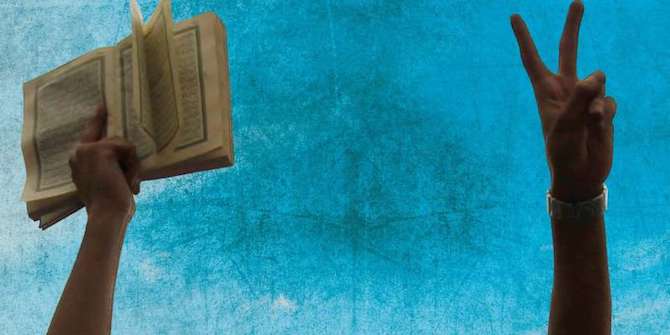by Alkhatab Al-Rawhani
#LSEYemen
This memo was presented at a workshop on ‘Yemen’s Urban–Rural Divide and the Ultra-Localisation of the Civil War‘ organised by the LSE Middle East Centre on 29 March 2017.

Since 2015, Marib governorate has taken in hundreds of thousands of internally displaced people (IDPs) and received thousands of fighters. It is the only governorate in northern Yemen the Houthis–Saleh alliance failed to control since their coup against President Abdrabbo Mansur Hadi in 2014.
In addition to its economic importance, Marib’s resistance against the Houthis represents a political and military defiance that remains central to the war more widely. Why has Marib played such a crucial role?
When the Houthis took control of Sana‘a, Marib tribes remained loyal to the legitimate government. Contrary to what might have been expected, the tribes’ experience of civil wars contributed to this decision. They understood the importance of a legitimate authority as a stabilising factor and saw it as the only option to protect the interests and security of all, without the prevalence of one party over another. The tribal system was geared towards cohesion and unity, forming a strong front against any spread or control of extremist groups, especially Al Qaeda. As such, despite the fact that some tribesmen in Marib support the Houthis, the governorate aligned itself with the legitimate government of President Hadi, though not necessarily Hadi himself.
The governor of Marib, Sultan al-Arada, also managed to bring all tribal leaders to sign an agreement vowing not to hand state institutions to any militia, and only to the Hadi government or any government agreed upon nationally.
In addition, since the beginning of the era of the late Saudi Crown Prince Sultan bin Abdul Aziz, the tribes of Marib have enjoyed a solid relationship with Saudi Arabia. This has helped build trust between Saudi officials and local tribal sheikhs, ensuring greater support in Marib compared to the other areas in Yemen.
What has changed in Marib?
Humanitarian challenges
This war has had a huge impact on all aspects of life in Marib. On the humanitarian level, Marib has received nearly 1.5 million displaced people – compared to its 250,000 local population. The majority of those displaced are concentrated in the capital of Marib, which previously had a population of 40,000. This has put tremendous pressure on the governorate and its already-suffering infrastructure.
Security challenges
Militarily, Marib is considered a place of origin of the war against the Houthis in the north. It is the headquarters of the Third Military Region, a new army comprising thousands of fighters from different areas of Yemen, and serves as the base of military actions. Despite the dramatic decrease in domestic crimes by 70 percent, security challenges related to the war are still vast. One main challenge is ballistic missiles, hundreds of which have been launched by the Houthis towards the city. In addition, local authorities are facing great difficulty in trying to remove the thousands of landmines in the governorate. Marib also witnessed a number of assassinations of military commanders.
Marib meets the Republic’s needs in gas (including domestic gas), electricity, as well as most of the oil, all of which fall under the control of the government. However, for the first year and half of the war, it was under the mercy of the Central Bank of Yemen in Sana‘a, which was controlled by the Houthis. With the relocation of the Central Bank to Aden in August 2016, Marib regained control over its finances. It was now able to stabilise monthly salaries of public employees in the governorate and neighbouring ones. Still, its economy faces sizeable pressures related to food trade, transportation, housing and basic services provision due to the large displaced population.
Local Governance
Marib has formed a unique model of local governance. As a result of a weakened central government, local authorities gained the power to act effectively in the governorate. It is the only governorate that still carries out development projects, including road asphalting, construction, water projects and the expansion of the electricity network as well as the capacity of the University of Marib.

What does this mean for the future?
Speaking to locals in Marib, it is noticeable they feel that their governorate is in their hands for the first time. Local authorities have presented a model of decentralised government not only at the administrative and developmental levels, but also at the political one – Marib is the only governorate in which all political parties are still functioning on site and operating at full capacity. Furthermore, local authorities occasionally meet with all tribes and parties’ representatives to consult with them and encourage participation in decision-making. This successful model will be difficult to ignore in the future. If the Houthis–Saleh alliance formed a revolt against the centralised authority, the Marib local governance model is a declaration of its death and of the establishment of a new kind of system. It’s clear that centralised power will no longer be accepted, neither in the south nor the north.
Alkhatab Al-Rawhani is a Yemeni journalist and communication specialist. He is also Affiliated Consultant at DeepRoot. He tweets at @alkhatabyemen.
Other Contributions in the Series
- Yemen’s Rural Population: Ignored in an Already-Forgotten War, Helen Lackner
- Empire of Information: The War on Yemen and its Agricultural Sector, Martha Mundy
- The Battle to Control the ‘Commanding Heights’ of the Yemeni Economy, Rafat Al-Akhali
- Saada: Ground Zero, Gabriele vom Bruck
- From Protesters to Politicians: The Rise of the Houthis, Nawal Al-Maghafi
- Taiz Youth: Between Conflict and Political Participation, Maged Sultan
- Community Responses to Conflict in Taiz, Kate Nevens
- Healthcare under Siege in Taiz, Sophie Désoulières
- Aden: Relief Challenges and Opportunities, Awssan Kamal
- Hadhramout from Federalism to Civil War: Demands and Realities, Baraa Shiban







3 Comments